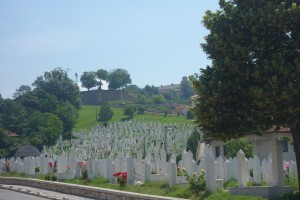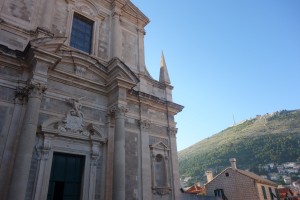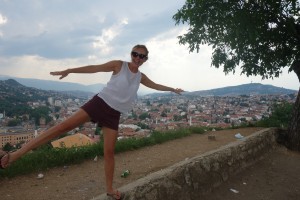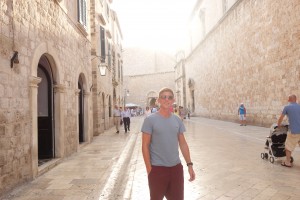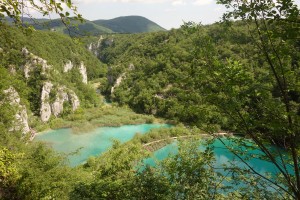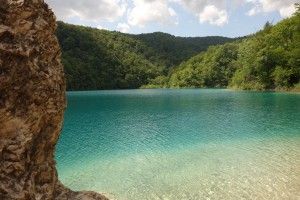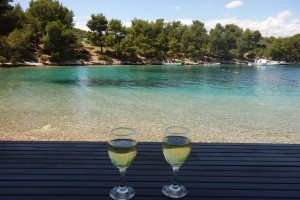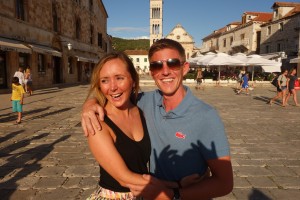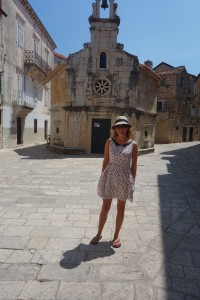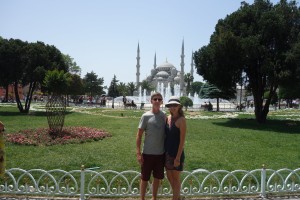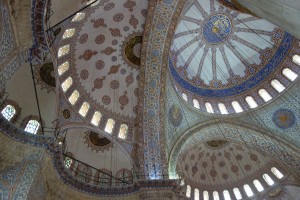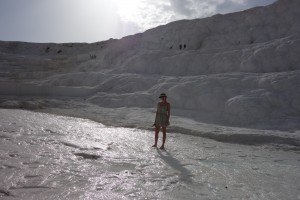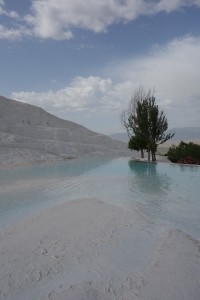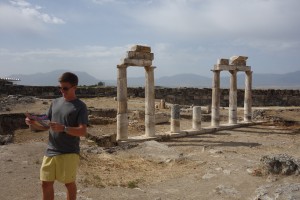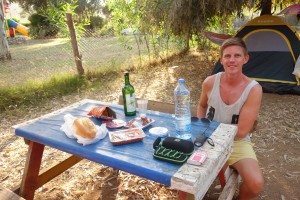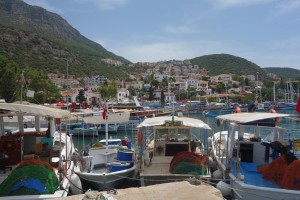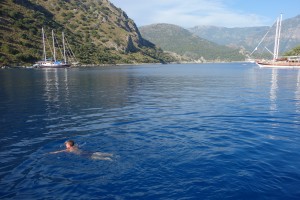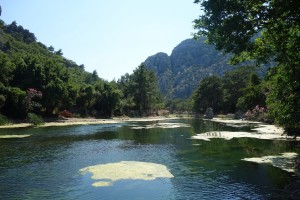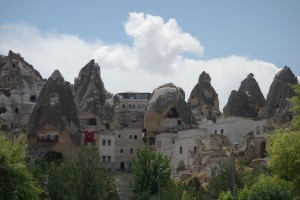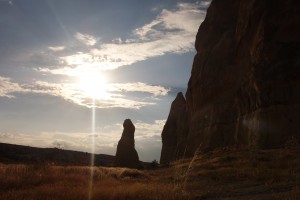As a kid growing up in the 90s I never thought I’d be holidaying in Bosnia, but there you go. It’s a funny old world.
Sarajevo is an incredible place. A bit battered around the edges but that’s to be expected in a city that resisted the longest siege in recent history. Bullet holes pockmark the apartment blocks along the main arterial road from the airport, once called Sniper Alley, where people – men, women and children – would be picked off mercilessly. Further on, stately Austro-Hungarian buildings, traces of bomb damage mostly plastered over, line an avenue that leads onto a quaint Turkish town centre. Toy-town suburbs stretch upwards into the green hills, the same hills from where once a Serbian army rained up to 4000 grenades a day onto this cute city. Here and there amongst the houses are graveyards sprouting countless white obelisks, each a headstone with a lifespan ending between ’92 and ’95.
But I’m painting an unjustly sombre picture here, this is a fun, vibrant place. Dozens of bars, clubs, restaurants and coffee shops are to be found in the cosmopolitan Old Town. The Turkish influence is apparent; mosques mingle contentedly with churches and synagogues; the call to prayer (still we can’t shake the East!) rings out alongside church bells.
One strange thing happened here though. We were walking along not far from where Archduke Franz Ferdinand was shot, kicking off the First World War, and near to the Sarajevo brewery, whose water reserves were vital during the Siege, when a man leaned out of a car window and shot a gun three times into the air. We, fresh from an exhibition about the Siege, almost dived for cover! We checked with our Bosnian guest-house owner – this is definitely not a common occurrence.
We rode a bus with an unreasonable number of passport checkpoints to Dubrovnik in Croatia. Dubrovnik is exquisite, just perfect. Thick walls encase an old town and port seemingly straight out of a Renaissance painting. The ground is buffed to such a sheen it’s as if the streets are paved with marble, gleaming in the sun. On the first night we strolled into the old town, planning perhaps on a nice meal in the harbour as the sun set. Anyway, one thing led to another and before we knew it we were downing shots with a gaggle of 18-year-old Australian girls on an all-you-drink pub crawl. We snuck off at about 2am and the hangover the next day affirmed that we were indeed too old for all this. We crawled to one of the beaches that are dotted around and drunk plenty of water that day.
The next day we picked up a car. The tiniest car in the world, but a car none the less. The poor thing struggled to even make the speed limit along the uphill stretches of motorway. But we grew to love it, and the freedom it afforded us. First thing we did was a 6-hour journey to camp at the Plitvice Lakes National Park, on our way north to Slovenia. The Plitvice National Park is a series of waterfalls and inlets that gurgle and gush into lakes so perfect you can’t quite accept that they’re not artificial, loaded with curious trout and with ferries that transport tourists too lazy to walk. We found a nice campsite deep in the Croatian countryside from where we could explore the park.
One day we awoke to thick cloud cover. We looked at each other in dismay and rushed to a nearby wifi-café. The weather satellite showed a large, maddening mass of cloud covering most of Central and Eastern Europe. We were not, we decided, going to spend our last few days camping in the rain. Within minutes our plans had been re-written: Slovenia was off the cards, at least for now. We retreated 200 miles south, to Split, where we caught a last-minute ferry to the island of Hvar – the sunniest place in Croatia!
We were starting to realise just how great a holiday destination Croatia is, and Hvar just compounded that feeling. A green island rising out of the blue Adriatic, covered in vineyards, arrestingly beautiful towns, and lavender fields which lend the breeze a sweet aroma. We found a delightful campsite with its own stretch of beach, strung up the hammock, opened a bottle of local wine, and then left the site only once – to celebrate our 2nd wedding anniversary in nearby Hvar town. We managed to avoid the pub crawls this time.
We begrudgingly left the island a few days later and started forging our way northward again, destination Venice. There we are to meet our good friend Dan, fresh actually from his own trip through South America, so we’ll have plenty to talk about.

